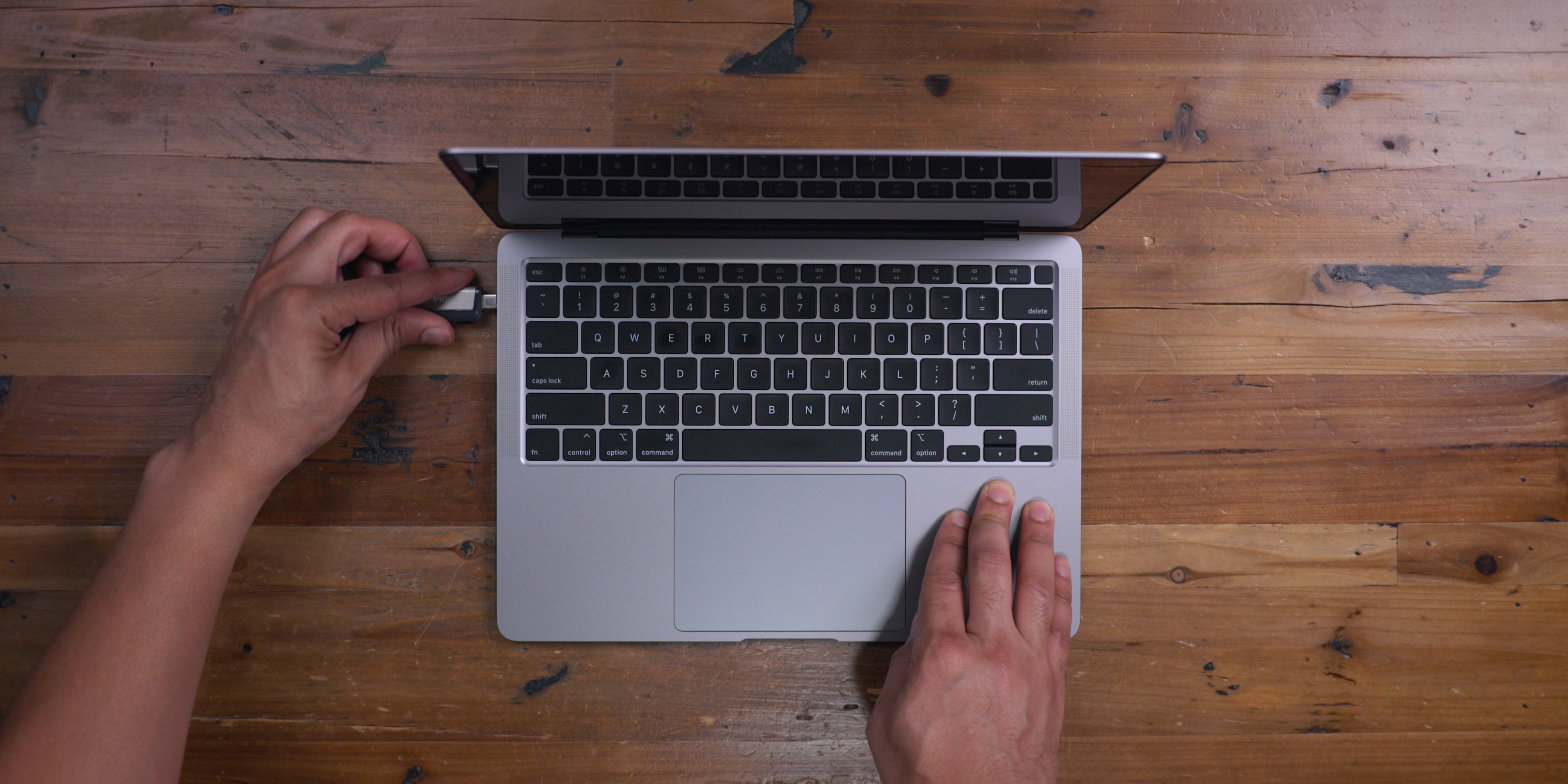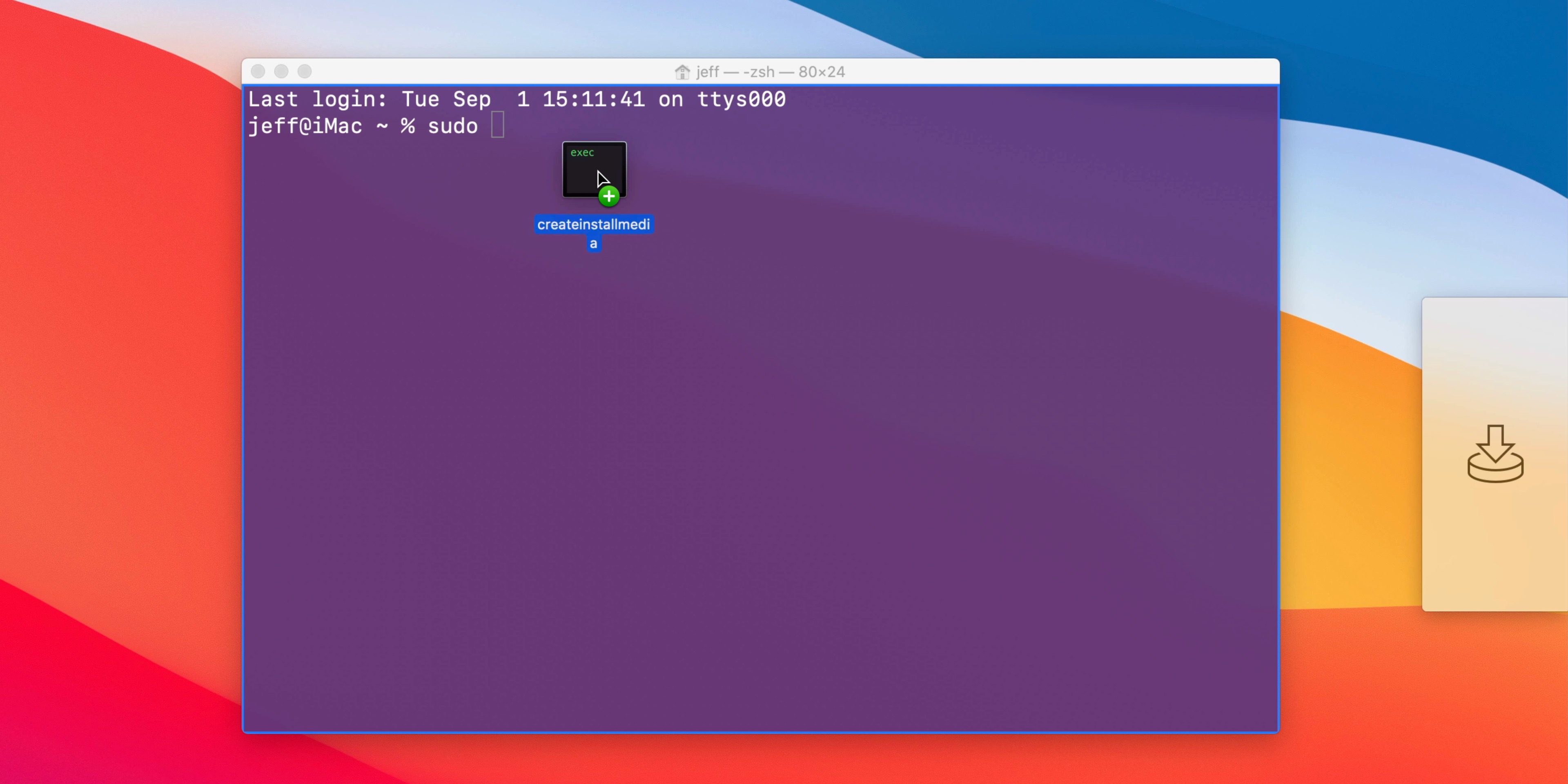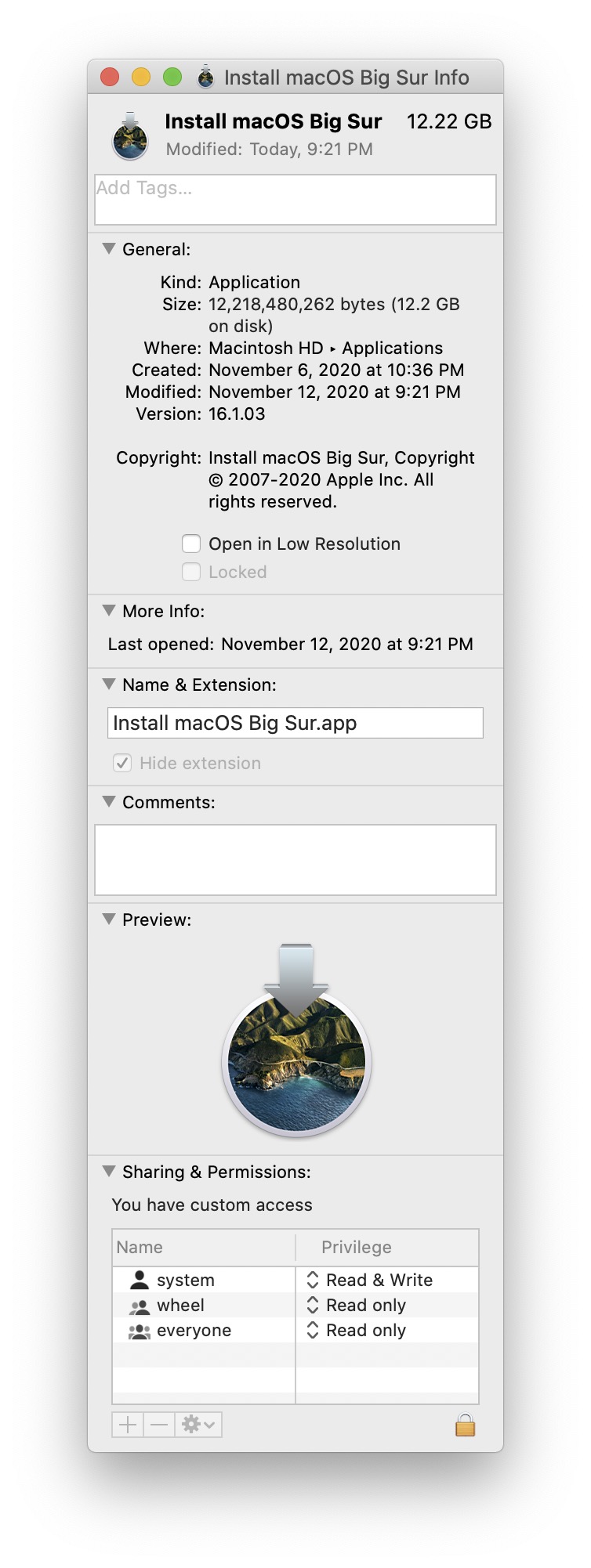Mac Os Big Sur Bootable Usb
Make your Mac invincible
- Mac Os Big Sur Bootable Usb Apple
- Crear Usb Bootable Macos Big Sur
- How To Make Macos Big Sur Bootable Usb
Why downgrade macOS Big Sur. Big Sur is a great update to the Mac operating system (read our Big Sur review), with some useful features and some iOS inspired changes.However, as with Catalina.
- UNetbootin is a Windows 10 USB tool Mac that is completely free to use and can be used in a scenario wherein you have to make bootable USB Windows 10 on Mac system. For this, you need to keep a USB with the.iso file downloaded in it.
- Bootable BD Blu-ray Disc for Mac OS X 11.0 Big Sur Full OS Install, Recovery and Upgrade. 1.0 out of 5 stars 1. Mac os x bootable usb mac os catalina.
- Here’s how to create macOS Big Sur 11.0.1 bootable USB flash drive installer for a clean install on your Mac. With macOS Big Sur being Apple’s latest software release, and with the public waiting a long time for its release, there is definitely going to be a big rush to install it.
- How to create a bootable macOS Big Sur USB install drive Step 1: Download macOS Big Sur. After Big Sur launches later this year, you’ll be able to download it directly from the Mac App Store.
Recently switched to macOS 11 Big Sur? This means you’re in for some huge enhancements and a completely redesigned look. It's fair to say Big Sur is not a perfect fit for everyone, though. Can you go back to previous macOS if that's the case? Sure. In this article, we describe how to downgrade from macOS 11 and continue using your previous macOS without any data loss.
Toolkit for safe macOS downgrade
Easily switch between macOS versions with Setapp. Get access to the apps that will keep your Mac invincible and your data protected.
Before you make a decision to uninstall Big Sur, check out some common macOS 11 problems and fixes. Maybe, the problem that is hampering your flow is on the list — and you can easily solve it. Also, if your Mac runs macOS Big Sur beta, you should know the public version available starting November 12 fixes most of the problems.
If you go like 'All right, thanks, just tell me how do I uninstall Big Sur from my Mac' — fair enough. The good news is it's easy to roll back macOS update. Follow the guide below.
How to downgrade from Big Sur step by step
Just to clarify the process a little bit, a downgrade from Big Sur covers five important steps — from backing up all the files you've acquired since upgrading, to restoring those on macOS Catalina. There are a few tools you'll need to use to downgrade safely: Primarily, a backup utility (Apple's native Time Machine or a more advanced third-party app like Get Backup Pro) and CleanMyMac X for keeping things tidy. Now when you're all set, let's get into it.
Best backup app for Mac
Before you roll back to the old macOS, create a secure backup of all your data with Get Backup Pro. So that there’s nothing to lose.
1. Backup your data (pretty please)
Even if you've just recently upgraded and haven’t managed to accumulate lots of data on macOS Big Sur, don’t skip this step. Downgrading means you erase everything from your hard drive. So whatever you’ve been working on since installing macOS 11 will be gone. Make sure you avoid the trouble and create a quick backup. You can do this with Time Machine, but we recommend Get Backup Pro for creating a bootable backup. This will give you an exact copy of your drive, with all saved settings — so that you can pick up where you left off.

Here’s how to back up data before you uninstall Big Sur:
Open Get Backup Pro from Setapp
Hit the plus button at the bottom to create a new backup
Name your backup project
Pick a backup destination and customize settings if necessary
Choose files, folders, and apps data you want to add to the backup
Hit Start.
It’s a good idea to use CleanMyMac X for a system cleanup before you create a backup. This way, you’ll avoid backing up unneeded files and duplicates, and therefore run a smooth and quick backup process. Plus, the app is generally a good tool to keep at your fingertips to remove any clutter. Believe me, your Mac has a lot of it. Here’s how CleanMyMac X works:
Open the app and hit Scan
Wait for CleanMyMac X to finish the scanning process
Hit Run if you want to remove all the junk, or Review if you want to select the files that should be deleted manually
That’s it! You’re all set for a clean backup.
2. Install macOS Catalina on a bootable drive
It might seem a bit counterintuitive, but you have to install macOS Catalina on an external drive before you erase Big Sur. This requires some Terminal work, which we’ll guide you through in a minute. Before that, make sure your Mac can boot from external media.
Allow booting from external media on new Macs
If you own a MacBook Air, MacBook Pro, or Mac mini with the T2 security chip (2018 models and newer), you might experience problems with booting files. To avoid this, you should allow booting from external media before you run downgrade to Catalina:

Restart your computer and boot in Recovery Mode (hold down Command + R once the Apple logo appears)
Access Utilities > Startup Security Utility
Enter your firmware password (note that this is the password you used to enable Startup Security Utility and it’s different from your admin and Apple ID credentials)
In External Boot, check the box next to “Allow booting from external media.”
Once you’re all set, it’s time to get Catalina back. First, download macOS Catalina from the Mac App Store, the usual way. While installers of the latest macOS versions are available only before the official release of the new one, you should do this as early as possible.
Then, install macOS Catalina on an external drive. Start with formatting the drive (you can skip this step if you have a formatted drive):
Get an external drive with minimum 12GB of free space
Connect it to your Mac via USB
Open Finder > Applications
Navigate to Utilities > Disk Utility
Click Erase next to your drive (make sure you name it if you have more than one)
Select APFS or macOS Extended format > Erase.
Install macOS Catalina on a formatted drive:
Open Finder > Applications
Launch Terminal from Utilities
Type the following command
sudo /Applications/Install macOS Catalina.app/Contents/Resources/createinstallmedia--volume /Volumes/MyVolume
Note that “MyVolume” in the command above is the name of your drive, so you should change it accordingly.
Click Enter/Return
Confirm your action by entering the admin password > Y
Click Return
Once Terminal says “Done,” you can quit it and eject the hard drive.
3. Remove macOS 11 from hard drive
Now is the time for goodbye. Here’s how to downgrade from Big Sur to Catalina by removing macOS 11 from your hard drive:
Click on the Apple logo and select Restart from the menu
Hold down Command + R to reboot in Recovery mode
Open Disk Utility > Continue
Select your Startup Disk > Erase
Select APFS or macOS Extended format and confirm your action.
4. Reinstall macOS Catalina on your Mac
Next thing, run a downgrade to Catalina by reinstalling it on Mac:
Make sure your Mac is connected to the internet
Connect your bootable external drive
Click on the Apple logo and select Restart from the menu
While your Mac restarts, hold down Option
Once the list of startup disk options appears, select the bootable drive with macOS Catalina installer
Hit Continue, agree to the licensing terms, and wait for macOS Catalina to reinstall.

5. Restore data from backup
The last step is to bring back all the data you’ve compiled since upgrading to Big Sur. Again, a backup is essential since it will help restore both your files and saved settings. You can restore everything with the same tool you’ve used previously to create a backup.
Here’s how to restore a Time Machine backup:
With your Mac connected to the internet, restart the system
Hold down Command + R to enter Recovery
Access Utilities > Restore from Time Machine Backup > Continue
Select the backup source > Continue
Select your backup > Continue
After Time Machine restores data from the backup, your Mac will reboot.
If you used Get Backup Pro for your backup, restoring data is even easier. All you have to do is launch the app, select your backup from the list, and hit Restore. Select a custom location for your files and once again click on the Restore button. That’s it. All your data and settings will be back on macOS Catalina in a minute.
That’s about it. Whenever you’re wondering how to go back to previous macOS, you can use the guide described above. All the instructions are pretty universal, except you should adjust the Terminal command when installing old macOS on a bootable drive.
In case your Mac is slowing down or else behaving strangely after the downgrade, we recommend to get iStat Menus for advanced system performance monitoring. This app will help you understand the source of the problem — whether it’s login items, network problems, or disk activity — and fix them accordingly.
iStat Menus is available on Setapp, along with the useful utilities like CleanMyMac X and Get Backup Pro. So you can use it all from one place for 7 days free. Hopefully, this toolkit will help you with how to downgrade macOS Big Sur, as well as keep your Mac in perfect shape, anytime.
Meantime, prepare for all the awesome things you can do with Setapp.
Read onSign Up
macOS Big Sur is coming in the fall of 2020, so this is a good time to learn how to create a macOS Big Sur bootable USB so you can install it on multiple Macs. This article shows you how to create the macOS installer on Windows 10 using UUByte DMG Editor, which is a professional and cross-platform disk authoring tool.
How to Download macOS Big Sur DMG File
Mac Os Big Sur Bootable Usb Apple
Let's briefly look at how to download macOS Big Sur DMG file. Of course, there are several third-party sources that are now offering the macOS Big Sur beta version as DMG but not all of them are trustworthy. For that reason, we recommend that you sign up for the Apple Beta Software Program here and proceed to register an Apple device so you can get access to download the OS profile and Big Sur Install app. Obviously, you can't register your Windows 10 computer so you will need a Mac computer to acquire the app.
If you don't have a Mac at hand, then you can directly download macOS Big DMG file via (link 1 or link2). The download might be a little slow as it is hosted on a third-party website. It could be much faster if it were hosted on Apple server or Google Drive.

Create a macOS Big Sur Bootable USB on Windows 10 PC
After downloading macOS Big Sur DMG file, you have to burn macOS dmg file to an USB. For this stage of the process, we will use UUByte DMG Editor, a professional disk authoring and disk image management tool. It is one of the simplest yet most powerful tools for managing DMG and other disk image file formats and is available for both Windows and Mac.
The interface and functions are easy to understand and even first-time users with no experience working with DMG files can easily get up to speed with the software in a few minutes. Once you have the DMG file on your PC, proceed with the following steps to create a bootable USB installer for macOS Big Sur beta.
Step 1: Download and install UUByte DMG Editor on Windows 10 using the official ISO installation file, which you can download from the UUByte website here.
Step 2: Insert the USB drive into an available port on Windows 10 PC and launch UUByte DMG Editor. Select the 'Burn' option on the welcome page.
Step 3: Select the DMG file using File Explorer and click 'Browse' button to 'import macOS Big Sur dmg file into the software. Make sure the correct drive (USB) is selected in the appropriate section.
Step 4: Name the USB Drive volume label as 'Big Sur Installer' or something similar, then click on 'Burn' tab to format the drive and create a bootable macOS Big Sur USB installer.
Step 5: Wait about 15 minutes and you will see the completion message on the screen. This means a bootable USB installer is ready and you can use that USB to install macOS on target computer.

Creating macOS Big Sur install USB on Windows 10 is simple with the help of UUByte DMG Editor. It is one of the best tools for managing DMG file on a Windows PC.
Troubleshooting when Burning macOS DMG to USB
Occasionally, you may run into some errors while preparing to burn macOS DMG to a USB drive. Here is a list of the most common problems and how to fix them:
USB Drive Not Detected: If your USB stick isn't being detected, it's a system problem or an issue with the drive itself. Make sure USB drive is installed on the PC. You can also try another drive to see if it works, or switch it to a different port.
Insufficient Space: This is another common problem that's easily rectified. All you need to do is use a different flash drive with additional capacity. macOS Big Sur disk image files usually require about 16GB capacity on the USB drive.
Corrupted DMG File: In this case, you can either try to repair the corrupted file if you have the knowledge to do so, or go ahead and download the file again from Apple's servers via the Beta Program. This issue sometimes occurs when you get disk images from third-party websites, which is why we recommend the Beta Program.
USB Installer Not Working: In rare cases, the burning process might have had an error. If so, you can use UUByte DMG Editor to burn the DMG file again to the USB drive. However, make sure that there's no issue with the DMG file itself because the editor has a high burning accuracy rate and such problems should not occur frequently.
Crear Usb Bootable Macos Big Sur
Conclusion
How To Make Macos Big Sur Bootable Usb
Once you have macOS Big Sur installer USB ready, you can insert it into any Mac and run the program to install Apple's latest desktop operating system. Big Sur is officially coming in the fall and has a ton of updated features on nearly all fronts, including the OS interface, Safari, Siri, Messages for desktop, etc. But you should also know that since the currently available DMG is only a public beta tester version, it is bound to have bugs and other issues. If you're on the beta program, you can use the feedback app to let Apple know what the issue is. Unfortunately, that also means that there's nothing you can do about it if you're not on the beta program.
